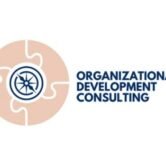High-Performance Culture: What It Is and How to Create It?

Organizations are constantly seeking ways to thrive and excel. The kind of work culture cultivated in the office can affect employees’ performance and productivity. This is why many organizations striving to achieve sustainable success aim to create a high-performance culture.
A high-performance work culture can prime your employees for success by motivating them to do their best every day. This can be a tough task, especially if you want to avoid risks such as burnout. However, when done right, you can shape a workplace culture that benefits your bottom line in the long run.
What Is a High-Performance Culture?
The definition of a high-performance culture can vary depending on which business you ask. Generally, a high-performance workplace is where employees are optimized to perform their best.
While it is impossible and irrational to expect perfection from employees daily, high-performance cultures empower employees to achieve more through excellence, collaboration, and accountability. Employees are motivated to meet goals, inspired to exceed expectations, and driven to innovate.
A high-performance culture is built on a foundation of clear goals, strong leadership, effective communication, and a focus on results. It encourages employees to embrace challenges, take ownership of their work, and strive for excellence.
What Isn’t a High-Performance Culture?
While it’s important to know the answer to “What is a high-performance culture?”, employers should also know what it doesn’t include.
A high-performance culture is a highly- desirable workplace, but managers and business owners need to manage their expectations and have realistic goals about what this means. High-performance work cultures aim for sustainable success, and pushing employees to extremes can negatively impact the long run. A high-performance workplace isn’t:
- Perfection: Even in a high-performance workplace, your employees are still prone to mistakes. Expecting them to uphold a culture of perfectionism and get things done right the first time 100% of the time creates a stressful environment prone to burnout. In a true high-performance workplace, employees aren’t afraid of failing, as they are able to learn from their mistakes and try again.
- Exclusive to Large Workplaces: From startups to corporations, businesses of all sizes can benefit from a high-performance workplace. While achieving this culture is more complex for larger companies, the process and reasons are similar regardless of size. You can achieve high-performing teams if you can keep your employees motivated and satisfied.
- Culture of Fear: In a real high-performance workplace, employees still have realistic goals and the resources to aim for and exceed these goals. They don’t feel pressured to meet unrealistic expectations because their workplace supports them.
- Force Employees To Work Harder: Employees aren’t stressed about their roles because they aren’t pushed into unrealistic expectations. Managers and business leaders don’t have to force employees to work harder because employees are motivated to be more productive and exceed their goals.
- No Work/Life Balance: Overworking your employees makes them stressed, chronically exhausted, and resentful due to the personal activities they miss out on.
What Are the Benefits of High-Performance Cultures?
While high-performance cultures can achieve short-term accomplishments, they can also produce long-term benefits. These include:
- Increased Productivity: Employees in high-performance cultures are motivated to perform at their best. This leads to higher levels of productivity and efficiency without the need to work longer hours.
- Enhanced Employee Engagement: Creating a high-performance culture fosters positive employee engagement. Your team celebrates values and recognizes employees’ contributions, promoting higher commitment and job satisfaction.
- Improved Performance: When individuals are empowered to excel and have the support and resources to succeed, overall organizational performance improves. This can lead to greater competitiveness and success in the marketplace.
- Innovation and Creativity: High-performance cultures aren’t about perfection. They encourage employees to take risks and innovate, driving continuous improvement and adaptation to changing market conditions.
- Better Talent Retention: Employees who feel supported and motivated are less likely to want to leave their current workplace. They are more likely to stay with an organization that provides opportunities for growth, development, and recognition of their contributions.
Key Features of a High-Performance Workplace
Creating an effective high-performance culture can vary depending on your workplace size, type, industry, and more. While there are different ways to approach this, there are several key features that every workplace should have:
- Clear Goals and Expectations: Employees need to be committed to these goals and understand what’s expected of them. From there, they can be motivated to contribute to the organization’s overall objectives. They need to feel that they’re making a significant impact on the company’s goals.
- Effective Leadership: Strong leadership is essential for setting the tone. A good leader can inspire their workforce, establish priorities, and inspire others to excel. Many employees don’t leave their jobs; they leave bad bosses. Your organization needs a leader who prioritizes trust, authenticity, respect, transparency, and accountability.
- Acknowledged Feedback: It’s not enough to put a comment card box in the middle of the office and call it a day. If employees are providing feedback, they need to feel seen and heard.
- Employee Recognition: Employees want to feel valued for their contributions. Recognizing their efforts helps them feel visible and motivated to continue excelling.
- Emphasis on Collaboration: While some healthy competition is good, your employees should feel like they can rely on their coworkers to aim toward the same goals. Collaboration fosters innovation, creativity, and shared ownership of goals and outcomes.
- Commitment to Learning and Development: Many employees don’t want to feel trapped in their current position with no room for growth. Investing in your employees’ growth and development helps them upskill and move into bigger roles. This can help them innovate their processes and succeed.
- Culture of Accountability: Everyone shouldn’t be scared of taking ownership and accountability of their positive or negative results. This also includes managers and leaders, who have an even bigger responsibility to hold themselves accountable for delivering results and upholding organizational values.
How To Foster a High-Performance Culture
Creating and sustaining a high-performance culture isn’t an overnight process. With the right approach, leadership, and patience to change the workplace culture, it is possible to cultivate an effective, high-performing culture. Here are some of the steps needed to achieve this:
1. Foster Effective Communication:
Establish open and transparent two-way communication. In a high-performing culture, employees are more likely to provide honest feedback when they feel heard, while managers can lead more effectively if they understand an employee’s career goals.
2. Establish Company Goals:
Setting your company’s values and goals can shape the kind of culture you build. When hiring, this helps you find potential employees who align with the culture you want to cultivate. Existing employees can become engaged and motivated by what the organization stands for. This fosters a high-performance culture because employees can relate to the shared values and goals.
3. Provide Resources and Support:
High-performing employees need the resources and support to excel. Once employees have this, they are optimized to fulfill their daily tasks, making them more likely to exceed their minimum goals. This includes providing:
- Learning and Development: Many employees want continuous education to ensure their skills remain relevant as the workplace’s needs evolve. Employers must invest in learning opportunities and provide development programs rather than focusing exclusively on occasional, as-needed training.
- Technology: Take advantage of the latest software and AI that can automate repetitive tasks. Employees who have to handle repetitive tasks may be wasting time when they can automate them and focus on more pressing tasks.
- Physical Environment: This doesn’t necessarily mean adding a ping-pong table in the office, though some employees can appreciate the balance of work and fun. This can also mean investing in ergonomic furniture, providing hybrid home and office setups, and providing daycare services for working parents. The goal is to provide a conducive environment for employees to focus better on their tasks.
4. Encourage Collaboration and Teamwork:
Foster a collaborative environment where employees feel comfortable sharing ideas, seeking input, and working together to achieve common goals. Some ways to do this include:
- Promoting Innovation: Encourage a mindset of continuous learning and improvement, where mistakes are viewed as opportunities for growth and innovation.
- Empower Employees: Give employees the autonomy and authority to make decisions, take calculated risks, and drive positive change.
- Recognize and Reward Achievement: Acknowledge and celebrate the achievements of individuals and teams to reinforce desired behaviors and motivate others.
Why Should Businesses Strive for a High-Performance Culture?
A high-performing workplace isn’t an easy environment to cultivate. However, when done right, it can benefit both employees and employers. Organizations should prioritize a high-performance culture for many reasons to set their workplace up for long-term success. These can include:
- Competitive Advantage: Organizations with high-performance cultures are more agile, innovative, and adaptable, giving them a competitive edge. Providing your employees with optimal working conditions allows them to adjust more easily to your industry’s changing needs.
- Future-Proofing the Organization: Many organizations experience the effects of economic downturns, recessions, and rising inflation. To address this, most organizations turn to cost-cutting measures. However, this impacts the workplace environment despite only addressing immediate costs. A high-performance workplace can future-proof an organization by making employees feel valued rather than expendable in times of financial difficulty.
- Different Employee Mindset: Older generations saw work as a place to earn a paycheck and go home, but the younger workforce had a different mindset. Many employees want rewarding workplaces, so a company’s culture has become a priority in their job searches.
- Attracting Top Talent: Platforms such as Glassdoor and Indeed allow employees to post reviews about the company, which can shape your organization’s reputation as an employer. Having a positive reputation as an employer who fosters a high-performance culture can help attract and retain top talent motivated by opportunities for growth.
- Enhanced Customer Satisfaction: Engaged, high-performing employees are likelier to go above and beyond for their customers. This can lead to better customer satisfaction, loyalty, and referrals.
- Resilience and Sustainability: Maintaining a high-performance culture is more sustainable than constantly pushing employees to their limits. Overworked employees can experience burnout faster and are more likely to seek less demanding job opportunities. However, a high-performing workplace gives employees the tools to do their best without fearing immediate burnout.
Achieve Your High-Performing Workplace with HPWP Group
Cultivating a high-performance culture is essential for reaching short-term goals and fostering long-term success and sustainability. By prioritizing clear goals, effective leadership, collaboration, and continuous improvement, your organization empowers employees to excel and perform.
At HPWP Group, we understand that creating a high-performance culture involves investing in employees’ skills and performance. We specialize in helping organizations build and sustain high-performance cultures through tailored consulting, training, and coaching solutions.
Contact us today for effective organizational development solutions catered to your growth, goals, and success.










